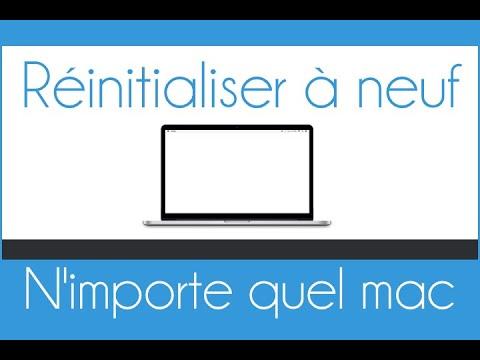Mac computers are generally reliable. But as with any computer, sometimes things go wrong. Before spending big on a new Mac, try a factory reset, which wipes your computer and reinstalls a clean version of macOS. A factory reset is also the best way to prepare your old computer for a new owner to ensure that any leftover data doesn't fall into the wrong hands.
The process has been the same for years on Macs with Intel processors, however, Apple's move to silicon has slightly changed the method of erasing and reinstalling the operating system. Here's how to erase your hard drive and reinstall the operating system on your Mac, whether it has Apple's Intel processor. Apple M1 or contains Intel components.
Entering recovery mode
To access options for erasing your data and reinstalling the operating system, you must enter macOS Recovery. However, with the release of new Macs, there are now two different ways to do this, depending on the chip present in your computer.
For Intel-based Macs
For Intel-based Macs, press and hold the power button, then choose the Restart option from the pop-up menu. Otherwise, open the Apple icon in the upper left corner of the screen and choose Restart. From there, hold Command + R until the Apple logo appears. Release the keys and let the Mac boot up and open in Recovery Mode.
For Macs based on Apple Silicon
Macs using Apple Silicon require a different method where you have to shut down the computer completely. Open the Apple menu and select Shut Down or hold down the power button and select Shut Down from the pop-up menu. Hold down the power button to turn the Mac back on and hold it for several seconds until you see "Loading startup options". Select Options from the Start screen to enter macOS Recovery.
Related to this article: What to do when your external hard drive is not showing up? (tutorial)
If you're in a predicament where your computer is frozen and normal ways of resetting aren't working, try the macOS Reset Tool. Control + Command + Eject (or power button) shortcut.
Erase your data
Regardless of your method of getting here, you must then select a user with administrator privileges and enter their account credentials before proceeding. have access to the computer's boot options. Once you're in macOS Recovery, select Disk Utility to erase the hard drive.
From the Disk Utility menu, choose the Macintosh HD drive under the Internal heading and click Erase on the top toolbar. A dialog will appear asking for the disc name and format. Keep the name Macintosh HD and make sure the format is set to APFS or Mac OS Extended (Journaled).
1Mac Douglas Kiribati Bryan S Women's Shoulder Bag, Black (Black) ), 7.5x16.5x23.5cm (WxHxL)
139.00 €Check22020 Apple Mac Mini with Apple M1 Chip ( 8 GB RAM, 256 GB SSD)
€773.00Check3Apple MacBook Air 2020 laptop: Apple M1 chip, 13′′ Retina screen, 8 GB of RAM, 256 GB of SSD storage, Backlit keyboard, Camera...
1 109.00 €VerifyClick Erase Volume Group (or Erase if this button is not displayed) to erase the disk, then ensure that all other internal disks are also erased to completely erase the disk. computer and avoid any errors during the reinstallation process. Exit the Disk Utility window to return to the recovery screen.
Be aware that once this process is complete, you will not be able to recover any deleted data that was on the disk. If you think you still need what's on your hard drive, we recommend backing it up first through Time Machine or syncing important files to iCloud.
Recommended by our editors
Reinstall and restore
If you plan to sell the computer, you can stop here and let the new owner install a clean version from macOS. For those planning to keep their Mac, your next step should be to reinstall macOS on the computer.
Related to this article: 10 Ways to Open Command Prompt in Windows 10Your computer must be plugged into a power source and connected to the internet. Back on the macOS Utilities screen, click Reinstall macOS and follow the instructions to download a new version of the operating system.
If you backed up your files through a Time Machine backup, you can now restore those files through Migration Assistant as part of the reinstallation process. You will be asked if you want to transfer the information from another Mac or from a Time Machine backup. Select Time Machine and continue the process of restoring your files.
If you decided against performing this action while cleaning up your Mac, you can return to the macOS recovery screen and choose the Restore from Time Machine backup option. Select the appropriate backup from the list to reinstall your backed up files.
